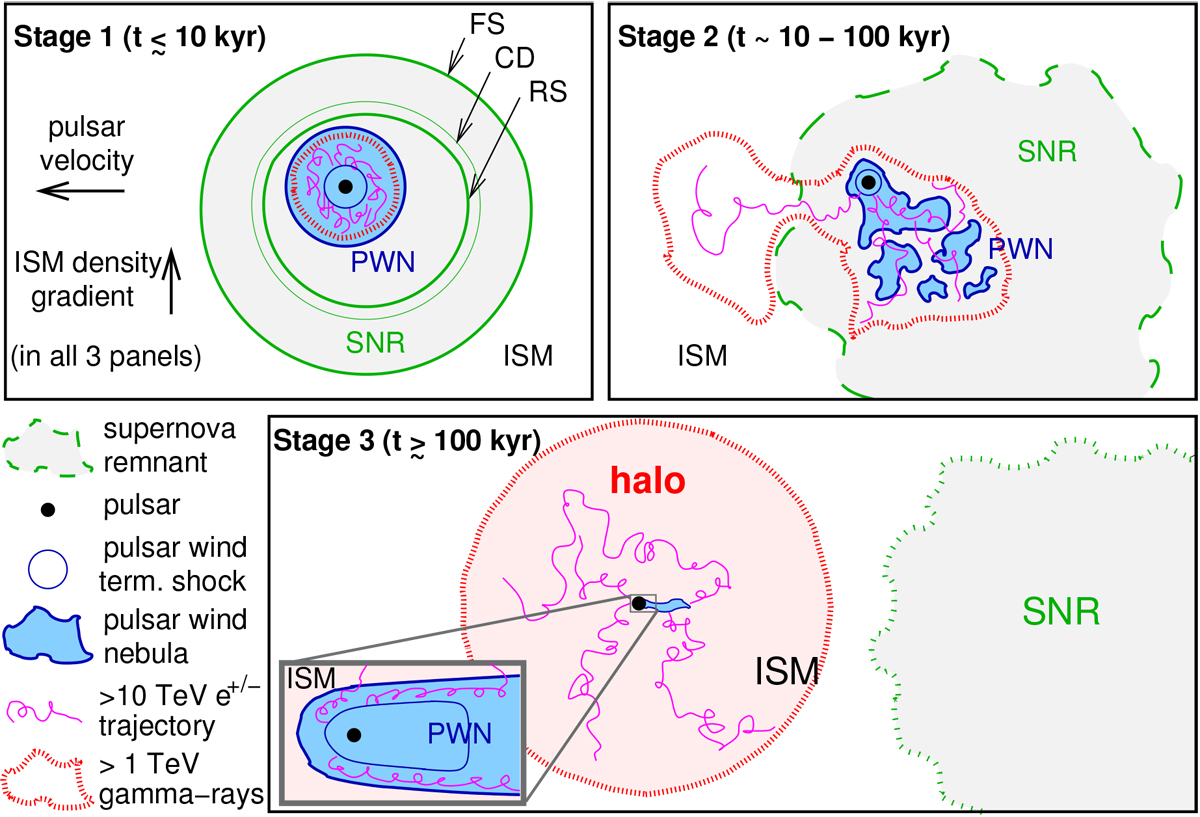Fig. 1

Sketch of the main evolutionary stages of a PWN. Upper left panel: early times, t ≲ 10 kyr (“stage 1”), when the PWN is contained inside the SNR and before the reverse shock (RS) interacts with it. The SNR forward shock (FS) and contact discontinuity (CD) are plotted with green lines. The electrons that are responsible for the TeV γ-ray emission of the nebula are thought to be confined within the nebula at this stage. Upper right panel: intermediate times, t ~ 10− 100 kyr (“stage 2”), after the PWN is disrupted by the reverse shock, but before the pulsar escapes its SNR. At this stage, TeV γ-ray emitting electrons start to escape from the PWN into the SNR and possibly into the ISM. Lower panel: system at late times, t ≳ 100 kyr (“stage 3”), when the pulsar has escaped from its currently fading parent SNR. At this stage, high-energy electrons escape into the surrounding ISM, and may, only then, form a halo under our definition. See the text in Sect. 2for more details. The key is in the lower left corner. In all three panels, the ISM density gradient is upwards, and the pulsar “kick” velocity is towards the left.
Current usage metrics show cumulative count of Article Views (full-text article views including HTML views, PDF and ePub downloads, according to the available data) and Abstracts Views on Vision4Press platform.
Data correspond to usage on the plateform after 2015. The current usage metrics is available 48-96 hours after online publication and is updated daily on week days.
Initial download of the metrics may take a while.


